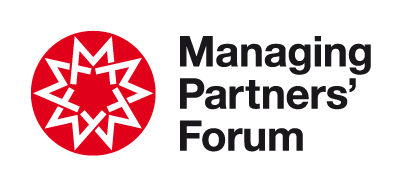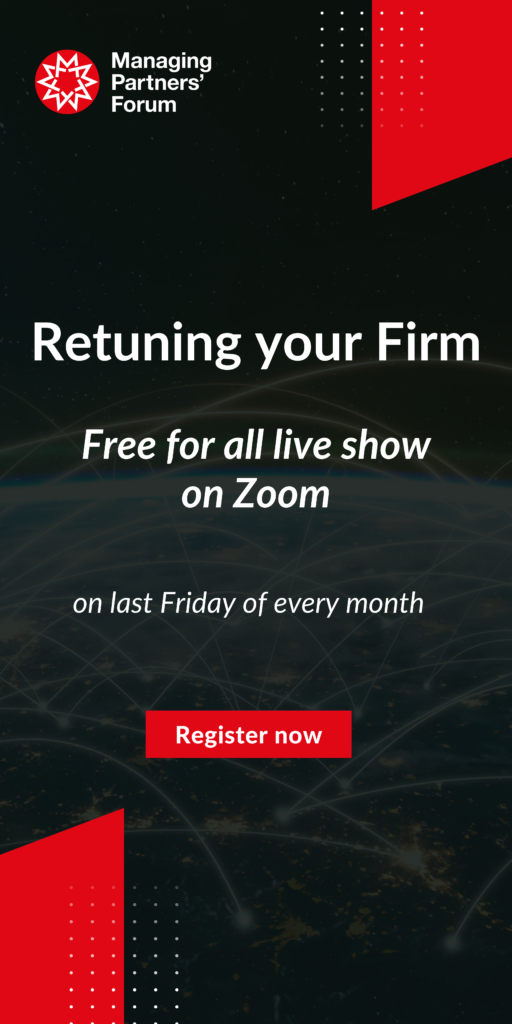Managing Partners’ Forum’s inaugural Technology Summit hosted by Lloyds Bank on 29 January comprised keynote presentations by Dr Bob Murray, of Fortinberry Murray and Rick Seabrook, managing director, Europe, of Neota Logic. This was followed by a panel discussion moderated by Rob McCargow, artificial intelligence programme leader at PwC, and featuring both keynote speakers together with Christina Blacklaws, vice president of the Law Society, Barry Quinn, head of UK and Asia at Axiom, and Justin North, director of Janders Dean.
Dr Murray, a behavioural neurogeneticist and clinical psychologist, began with a practical exercise. We were asked to shake hands with as many people as possible, and each time to find a different way to do it. This was to demonstrate human beings’ capacity for creative decision-making, in preparation for a talk that started by discussing human memory.
Humans have four brains, says Dr Murray. As well as the brain in our head, our gut brain informs 60% of our decisions – instantaneously!
The hand-shaking exercise was a demonstration of our skin brain. We remember people we make contact with, although keeping all our information on a smartphone is reducing our memory power and attention span. Our heart brain is not just about romance, it is about our emotions informing nearly all our decisions. Humans are irrational, says Dr Murray. We decide on the basis of emotion, or supportive relationships.
Dr Murray believes that by introducing technology that separates people physically, businesses are rushing to irrelevance. He believes that the human factors are the critical success factors because business is ultimately built on relationships.
People use professional services for relational support – not for technology. Dr Murray backs this up with an iceberg diagram about conversation showing that 1% of every conversation is the presenting issue, or topic; and the rest is about underlying issues: fears, hopes and assumptions.
Business relationships depend on four main human drivers, distilled into the acronym CATS:
- Certainty – relational certainty that you will be there for them
- Autonomy – that they have control of the situation
- Trust – that they trust you
- Status – people are more likely to buy something that increases their sense of status
Dr Murray believes that technology is leading humanity down a bad path. “We have to put humans first; and satisfy their psychological cultural needs before we decide what technology to adopt.”
Dr Murray’s human-centric approach was followed by a presentation by Rick Seabrook from Neota Logic, who began by highlighting technology’s role in solving real-world problems. Neota Logic is partnering with law schools, charities and pro bono organisations around the world to support people and communities who cannot access legal representation. “There’s a fundamental imbalance that technology can help address,” says Seabrook, who is a technologist.
Seabrook previously worked at Accenture, advising automotive, telecoms, financial services and energy companies – the top four industries in terms of embracing technology and innovation, while professional services remain at the bottom of the league.
He offers five examples of the impact of technology on professional services:
- Automation is freeing up resources. In 2017, it was reported that JP Morgan used software to review commercial loan agreements, doing in seconds a task that previously took lawyers and loan officers 360,000 hours per year.
- Technology is enabling professional services to repackage their expertise into new, scalable products/services which have no human interface, making them infinitely scalable.
- Technology is transforming the core business from reactive and responsive to proactive as professional services organisations become part of the fabric of their clients’ organisations.
- Automation changes the value proposition, as software that runs autonomously throughout a bank, for example, produces more value than any individual can bring. The role of the professional and the expert are changing, and organisations are creating new roles because they need new skills: data scientists, product designers etc.
- There are more strategic options and the winners in professional services are simultaneously transforming and growing the core business while looking for opportunities to scale new propositions. Some law firms are creating innovation labs and investing in start-ups e.g. A&O Fuse and Slaughter and May taking a stake in Luminance.
Seabrook identifies six critical success factors for technology implementation:
- Understand your context: what are your clients buying from you? Is this sustainable? What’s happening in their industry – are there substitutes for the service you are providing/automation that fulfils the same/similar needs?
- Articulate your strategy: identify what makes your business unique and invest in it. JP Morgan invests 10% of its global annual turnover in R&D. Few professional services firms are following this strategy.
- Build competencies within your business: give ideas oxygen to grow and find answers. Nurture the talents within and outside the organisation.
- Understand your partnerships: understand your strengths and look for partners to build and scale.
- Use technology is an enabler. Make sure there’s a business case, not just a use case for technology investments.
- Ensure you have the right leadership to manage the journey, which flexes during the change process.
The panel discussion touched on the impact of technological disruption on law firm culture. Is the fact that people are anxious about their jobs stifling innovation, asked panel chair, Rob McCargow. Is there a culture clash between the legal industry’s traditional attitude to risk and consultants’ culture of curiosity?
Christina Blacklaws, vice-president of the Law Society, observes that job losses in legal services due to automation currently affect about 9% of non-fee-earning staff, and this is likely to increase to 20%. It is therefore important for everyone working in law firms to understand the implications of technology – from incremental changes to disruption. Firms need to curate the market so that they can make informed decisions, she says. Another important role for law firms is influencing the market to develop products and services to help address unmet legal needs.
Barry Quinn at Axiom observes that corporate legal functions, particularly in banking, are mandated by the business to apply AI to managing changes such as GDPR and Brexit that will affect large volumes of contracts and other documents. The leadership of the legal function is often dealing with tension between the business that is pressurising for more AI and the lawyers whose work is affected. Until now, the economics of AI implementation limited it to the largest banks and projects, but now that accuracy and usefulness is increasing, the usage is growing. As the costs decrease, the use cases will explode.
Returning to the human impact of AI, while Dr Murray is concerned with tech increasing human potential, McCargow observes that trust in technology platforms is at an all-time low, notwithstanding the growth in new AI start-ups.
Seabrook responds that technology has more potential to benefit everyone – the disenfranchised, the unlawyered, the unserved and redress some of society’s imbalance. He acknowledges that a lot of the suspicion surrounding technology platforms and services is around the use of personal data. At the moment, if you’re not paying for a service, your data is the product, he says. However, there is a backlash, and this includes regulation such as GDPR which is designed to defend our rights over our personal data.
Returning to professional services, McCargow comments that it is hard to have a deterministic strategy for AI adoption because it is constantly changing, there is no obvious purchase point for AI technology and it is challenging for the partnership model to bring in innovators. Is there a need to change the cultural mindset towards technology in professional services?
Quinn believes that AI is not about replacing people. In fact, tech plus process design can increase job satisfaction as well as efficiency as it frees people from mundane tasks.
Justin North of Janders Dean sees technology purchasing as a collaborative exercise between the firm and the client. Automation can produce alternative revenue streams too – if you can’t find a way to make money while you sleep, you’re going to work until you die, he says. At the same time, he believes that busting the myth that automation will reduce billing may help to break resistance to change.
Blacklaws believes that the democratisation of technology will engage smaller firms in emerging technology. They need to familiarise themselves with what is out there and what can be achieved. Tech is so much more empowering than it used to be when it required an army of IT guys, she says. Although there’s a big choice, many of the AI offerings do similar things that firms can try on a pay-as-you-go basis. It’s about engaging with academics, lawyers, policy makers and technologists.
But when it comes to responsibility for procuring tech for a professional services firm, there was general agreement that this should be down to the managing partner, or senior management, who have gained the trust of its stakeholders, who include partners, staff and clients. In the end it comes down to relationships.
Joanna Goodman

